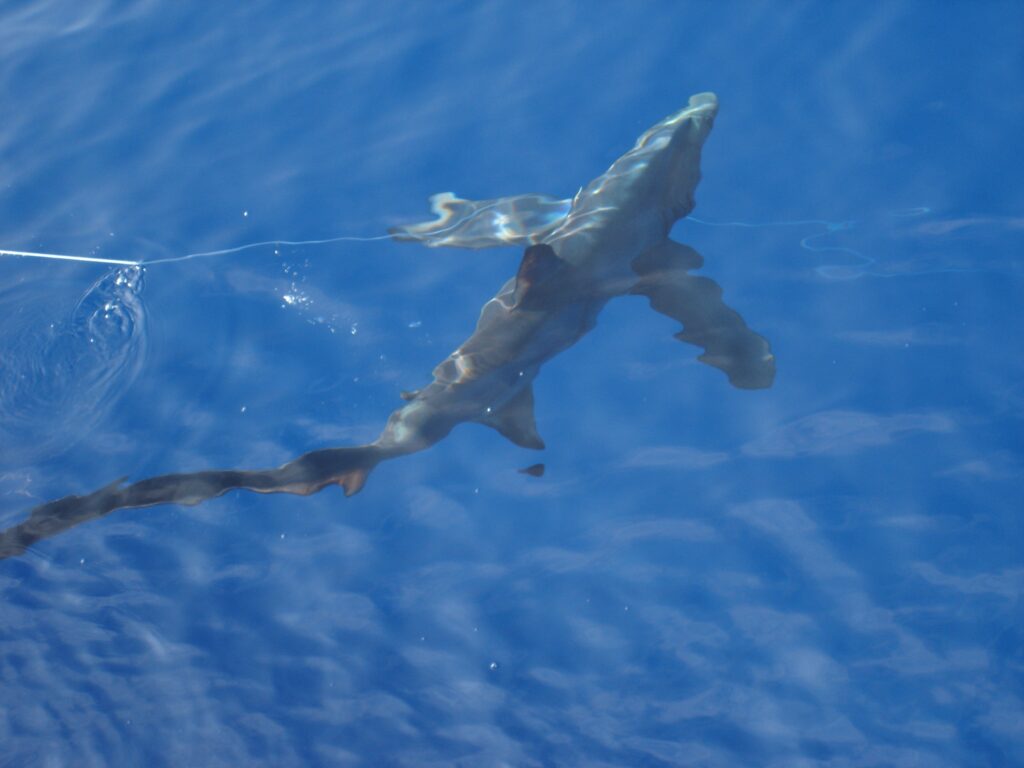The thresher shark or Alopias Vulpinus belongs to the phylum of chordata. The reason why it falls into chordata is because at one in their life cycle they develop a dorsal hollow nerve cord, a notochord, pharyngeal slits, and a post anal tail. There size and weight varies depending on age and gender. A juvenile can be anywhere from 226-400 cm the average being 351 cm. The max a full grown male grows up to is 573 cm whereas a female grows up to 549 cm, average for both being 450 cm. The max weight and age of a thresher shark is 348.0kg and 25 years of age.
Thresher shark in terms of their habitat are found all over the world in temperate and tropical oceans. Meaning they are found anywhere from the Americas, Europe, Australia, and Asia. They are most abundant near the coast and can also be found in the epipelagic zone. However their numbers near the coast are reduced. Which is partly due to humans hunting them for their hide, liver, meat, and fins. Which can be used for leather, healthy oils, and food. Humans are the only threat to adult thresher sharks. Juvenile thresher sharks however are hunted by both bigger sharks and humans. It has been difficult for the offspring to keep up, as thresher sharks only reproduce once a year. They only give birth to 2-4 young, the good thing is that a male doesn’t need to attach himself to the female. As they are ovoviviparous similar to how snakes mate. Embryos feed on eggs that passed into the uterus. Which is how eventually the embryo becomes a young thresher shark.

Thresher sharks are capable of hunting in groups to eat schools of fish like mackerels and bluefishes. They also eat clupeids, needlefish, squid, octopus, crustaceans, and sometimes seabirds. Their distinct upper caudal fin is whip-like in shape. It can be used like a whip to stun fish so they can be eaten. In a situation where a group of thresher sharks are feeding on school fish. They will circle the school and stun them with their caudal fin. The fin is also capable of launching them out of the water. They have moderate sized eyes, dorsal fins ahead of the pelvic fins, pectoral fins are curved and narrow, above them is a white patch that extends across the abdomen. They have 20 teeth on their upper jaw and 21 on their lower jaw, in which the lower jaw is sharper. Capable of allowing them to bite and tear away into the flesh of their food. However just because they are capable of being the top predator in their environment, doesn’t mean other animals don’t give them a hard time. There are nine different parasitic copepods that can attach to the gill filaments which can cause damage and troubled breathing. In turn providing nutrition for themselves and harm towards the thresher shark.